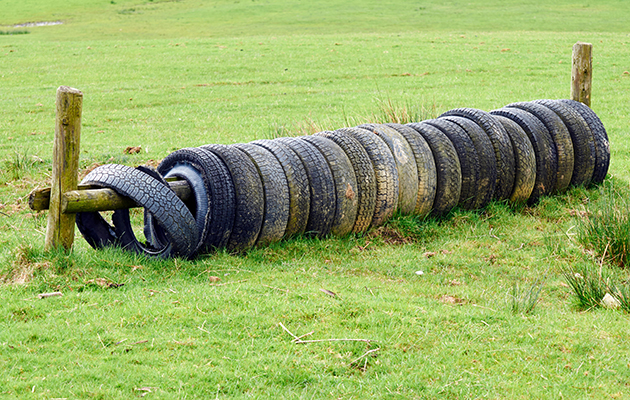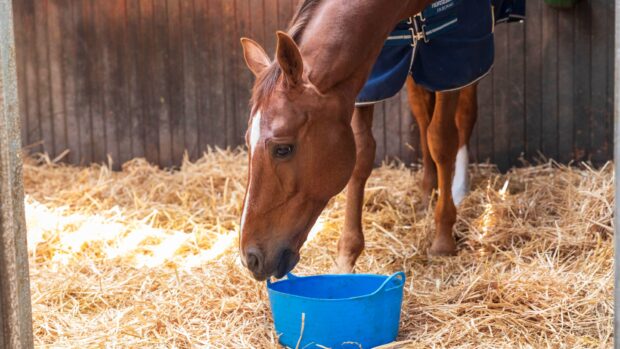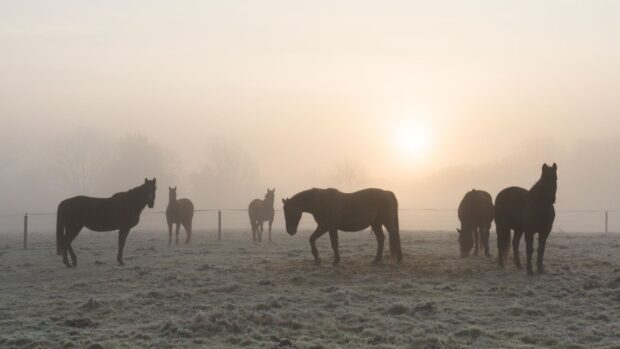While getting out and about to different cross-country venues with your working hunter is ideal for their development, sometimes it’s not always possible to travel week in week out for training opportunities, especially if you’re juggling horses around work. With this in mind, you might decide to make your own working hunter jumps so you can practise at home in between shows.
With the correct, safe equipment and a little bit of space, you can certainly progress at home, so that you’re on the right path to a clear round next time out.
H&H asks some of the circuit’s top working hunter riders on their tips for designing and constructing home-made working hunter jumps and courses:
1. Get inventive with fillers
“I go to garden centres and buy artificial grass and flower pots,” says William Pittendrigh, rider of the 2021 Horse of the Year Show (HOYS) intermediate working hunter winner Silver Lough. “I also go to agricultural shops and buy sheep dip trays to use as water trays. I also got some really great scarecrows from B&M and some fantastic fake flowers and hanging baskets from Tesco! This can be a cheap option if you’re looking to save money.”
Ginny Rose, rider of many top working hunters including Out Of Order, ABC Little Rock and Wyworrie, similarly gets creative when it comes to fillers.
“I use haylage wrap to make water trays and will regularly have a look in the skip; there might be an old door that I can paint onto,” she says. “I’ve painted potato pallets white to make a rustic fence, and I’ve painted old carpet green.
“I also make little animal figures, such as chickens, ducks and foxes, out of wood to dot around the jumps. Buckets under fences are also an option.”
2. Use your surroundings
Producer Justine Armstrong-Small, supreme champion at HOYS with working hunter Zin Zan in 2003, uses her rural location to her advantage.
“We live in the middle of a forest, so I often use some of the bushes for jumps,” explains Justine. “We cut down the branches to make a bullfinch and we make logs for the fire, which we also put under jumps. I have also used drainage pipes as jumps in the past.”
Ginny lives on a farm:
“I often use tyres I find on the farm and as we grow Christmas trees, there are usually some lying around at certain points in the year that I can use,” she says.
3. Nail your technique on the flat
Katy Green has competed with working hunters for several years; in 2016 she was responsible for both Royal Windsor worker champion and reserve.
“These days, the courses are big and bold, and can be like showjumping tracks, so I need to be able to lengthen and shorten my horses accordingly,” says Katy. “I’ve not had an arena until recently but even if you don’t have a school you can develop training exercises which can help create and maintain a balanced, adjustable canter.”
“One exercise I use regularly is to set up two poles or small fences at either end of a field or an arena. I pop down over each pole and back again, perhaps aiming for five strides in between, and then four, before asking for seven. Sometimes, I’ll put a pole in the middle, too. Some of the young horses can land in a heap after the jump and rush onto the next so this helps teach them, and me as a rider, not to anticipate.”
Katy also swears by plenty of flatwork training in between jumping:
“Horses only have so many jumps in them so I tend to save the big stuff for the ring,” she says. “I do a lot of strengthening work at home. My jump training includes small oxers, raised canter poles, grid work and bounces so the horses learn to respect the fences. Hacking also helps with spookiness; if they can go hacking confidently they can hopefully tolerate the scary stuff in the ring.”
4. Get to know your courses…
“It’s important to try and replicate what you’re going to see at a show,” says leading working hunter specialist Kelly Ward, whose daughter, Ruby Ward is also one of the circuit’s top working hunter pony contenders. “If you’re going to a certain show you can guess what the track is going to be like.
“Ahead of Hickstead we always try to make traditional fences and build out in the field. We will dig a ditch and build a bullfinch. Handily, our farrier lives in an area with lots of trees, so at a certain time in the year he’ll bring us plenty of foliage to practise over.
“Wall fillers are popular at the moment so we’ll try to duplicate these, too.”
5. …and your course designers
“Having jumped the tracks over the years you get to know which sort of courses each builder will create,” says native specialist Amy Smith, whose Connemara Laburnum Richard has been HOYS champion twice. “Some build up to height with big square oxers, while others will build smaller, more technical tracks for the rider to navigate. Your training at home should reflect this.
“You can also guess which designers will put longer distances in, too.
“And you need to ensure you’re training on different surfaces. If you’ve ridden on an arena surface all year and you’re heading to a county show, you should aim to have a jump on grass.
“The key ethos is to fail to prepare, prepare to fail. Try to do as much as possible before you warm up at the show.”
You might also like:

Don’t have your own jumps? 10 DIY solutions to your problem

Are you eligible? What should you wear? A complete guide to horse working hunter classes
Make sure you're ready for the show season with Horse & Hound's guide to horse working hunter classes...
Horse & Hound magazine, out every Thursday, is packed with all the latest news and reports, as well as interviews, specials, nostalgia, vet and training advice. Find how you can enjoy the magazine delivered to your door every week, plus options to upgrade your subscription to access our online service that brings you breaking news and reports as well as other benefits.




